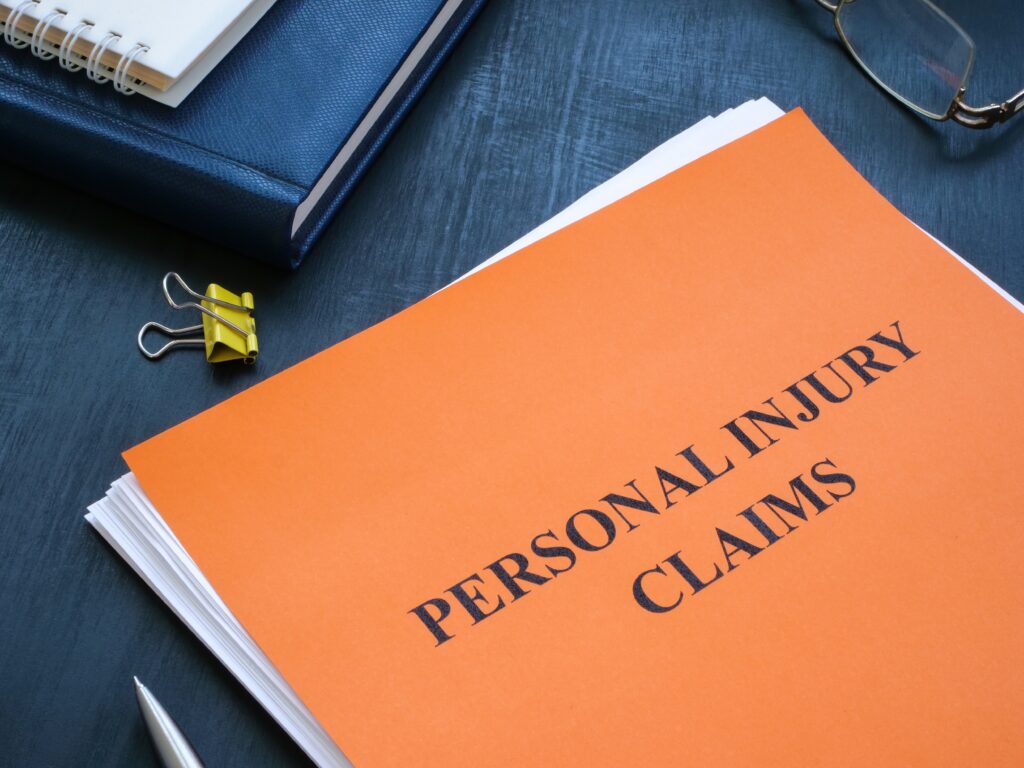Navigating the legal landscape following a personal injury can often feel overwhelming. Whether you've been in a car accident, suffered a slip and fall, or been the victim of a trucking collision, understanding the process of a personal injury lawsuit is essential to ensure you receive adequate compensation for your injuries.
If you are thinking about pursuing a personal injury legal claim, it is vital to understand the complexity of personal injury law. You need to know what steps the process involves, when and how to file a lawsuit, and the role of a personal injury lawyer in your case.
Fortunately, by gaining a deeper understanding of these procedures, you'll be better equipped to make informed decisions and take control of your legal journey.
Understanding Personal Injury Law
Before delving into the intricacies of personal injury lawsuits, it's crucial to have a basic understanding of personal injury law.
Definition of Personal Injury Law
Personal injury law, often referred to as tort law, covers civil cases where one party's negligence or misconduct causes harm to another party. The law allows the victim—the plaintiff—to seek compensation from the responsible party—the defendant. This remedy aims to restore the victim to the position they would have been in if the injury had not occurred.
Types of Personal Injury Cases
Personal injury cases span a wide range of incidents. Some of the most common types include car accidents, medical malpractice, slip and fall accidents, defective products, and workplace injuries. Each type has its unique characteristics and legal requirements but shares the common goal of establishing liability and obtaining fair compensation for the victim.
Importance of Personal Injury Law
Personal injury law plays a pivotal role in holding negligent parties accountable, deterring harmful behavior, and providing victims the means to recover financially and physically. Without this legal protection, victims would bear the financial burden of another's wrongdoing, which would be an injustice.
When to File a Personal Injury Lawsuit
In addition to understanding basic personal injury law, you want to recognize when to file a personal injury lawsuit.
Identifying a Personal Injury
The first step in a personal injury lawsuit is identifying whether you have a personal injury. Injuries can vary widely and may encompass physical harm, such as broken bones or spinal cord damage, or psychological injuries, including trauma or stress. If someone else caused your injury, you may have a valid personal injury claim.
Determining the Right Time to File a Lawsuit
Timing is critical when filing a personal injury lawsuit. You should normally start the process as soon as possible after the injury occurs to allow for a more accurate collection of evidence and witness statements. Each case is unique, however, and several factors may influence the decision.
Importance of Filing Within the Statute of Limitations
Every jurisdiction’s statute of limitations sets the legal deadline for filing your lawsuit. If you fail to file your lawsuit in time, you lose your right to pursue compensation. You must file your personal injury lawsuit within that period for your case to succeed.
Steps in a Personal Injury Lawsuit
Now that you know when to file a personal injury lawsuit, you need to understand more about the process. While the steps can vary slightly depending on your jurisdiction and the specifics of your case, they broadly remain the same.
Hiring a Personal Injury Lawyer
The first step in any personal injury lawsuit is hiring a personal injury lawyer. An experienced attorney can navigate the complexities of the case, gather necessary evidence, handle negotiations, and, if necessary, represent you in court. The right lawyer can make a significant difference to the outcome of your case.
Investigating the Claim and Reviewing Medical Records
Once you have a lawyer, they will investigate your claim. Your lawyer will gather evidence, such as accident reports, witness testimonies, and medical records, to build a strong case. They will also review your medical records to understand the extent of your injuries and their influence on your life.
Filing the Lawsuit
After compiling all the necessary information, your lawyer can prepare and file a complaint against the at-fault party. This document outlines why you believe the defendant is responsible for your injuries and what compensation you're seeking.
Discovery Process
During the discovery process, both parties exchange information related to the case. It usually involves interrogatories (written questions), depositions (sworn statements), and the production of documents.
Negotiations and Settlement
Before the case goes to trial, both parties will often try to negotiate a settlement. Your lawyer will attempt to negotiate an agreement that adequately compensates you for your injuries.
Trial
If both parties cannot settle, the case will proceed to trial. Your lawyer will present your case before a judge or jury who will deliver a verdict and specify the amount of compensation you are to receive.
Every personal injury case is unique, and the process may vary. Understanding these general steps can, however, provide you with valuable insights into the personal injury lawsuit process.
Understanding Damages in Personal Injury Cases
You need to comprehend the concept of damages in personal injury cases, including the types of damages you may receive and how to calculate them.
Definition of Damages
In a personal injury case, damages refer to the monetary compensation the injured party may recover from the responsible party. Damages compensate the victim for their injuries and the associated costs, including medical expenses, pain and suffering, loss of income, and property damage.
Types of Damages in Personal Injury Cases
There are two main types of damages you can receive in a personal injury claim: compensatory and punitive. Compensatory damages cover the victim's losses resulting from their injury. They include economic damages (quantifiable costs, such as medical bills and lost income) and non-economic damages (hard-to-measure costs, such as pain and suffering).
Punitive damages, on the other hand, are not intended to compensate the plaintiff. They aim to punish the defendant for particularly egregious behavior and deter them and others from similar conduct in the future.
The Calculation of Damages
Determining economic damages involves adding up financial losses such as medical bills. Determining non-economic damages such as pain and suffering, however, requires a more complex, subjective process. Factors such as the severity of the injury, the level of pain, and the effect of the injury on the victim's daily life can all influence the amount of damages. In some cases, you may need a personal injury attorney to provide a quantifiable figure.
Having a full understanding of the different forms of damages and how to calculate them is crucial since they directly influence the amount of compensatory damages available to you in a personal injury lawsuit.
The Role of a Personal Injury Lawyer
A personal injury lawyer can ensure your case progresses smoothly and you receive the compensation you deserve. A personal injury lawyer acts as your guide in navigating your lawsuit. They provide legal advice, interpret complex legal jargon, carry out thorough case investigations, negotiate with insurance companies, and, if necessary, represent you in court. A personal injury lawyer will protect your rights and work tirelessly to ensure the best possible outcome for your case.
Choosing the Right Personal Injury Lawyer
Choose the right personal injury lawyer for your case. Relevant factors include experience, reputation, and personal fit. It's essential to select a lawyer who has experience dealing with cases similar to yours and a successful track record.
What to Expect From Your Lawyer
You can expect your personal injury lawyer to be your advocate during the lawsuit process. They can explain each step, update you about the case, answer your queries, and alleviate your concerns. They should also explore all potential compensation sources and aggressively advocate for your right to maximum compensation.
In a personal injury case, the lawyer-client relationship creates a partnership that requires open communication. Ensure you are comfortable with your lawyer and trust them to handle your case effectively.
Understanding the role of a personal injury lawyer and making an informed decision when choosing one can significantly influence the outcome of your personal injury lawsuit.
Common Misconceptions About Personal Injury Lawsuits
Common misconceptions surrounding personal injury cases can deter victims from pursuing a valid claim or cause them to harbor unrealistic expectations. To make an informed decision and to better navigate your legal journey, you must differentiate between fact and fiction in personal injury lawsuits.
Debunking Common Myths
One common misconception is that all personal injury lawsuits result in large payouts for the plaintiff. This is untrue, as the settlement or compensation amount depends on several factors, including the severity of the injury, the extent of the defendant's negligence, and the actual costs the victim's injury incurs. While some cases result in very large payouts, they are not the norm.
Another myth is that personal injury lawsuits are fast and can resolve quickly. In reality, a personal injury lawsuit can take several months to several years to resolve, depending on the complexity of the case. You need time for a thorough investigation, preparation of the case, discovery, negotiation attempts, and, if necessary, a trial.
Finally, there is a misconception that a personal injury claim is easy to handle without a lawyer. Without professional legal assistance, your mistakes will reduce your chances of a successful claim and fair compensation.
Understanding the Reality of Personal Injury Lawsuits
Personal injury lawsuits often require extensive legal knowledge, time, and resources. The outcome depends on the specifics of the injury, the amount of evidence, the cooperation of parties, and the legal prowess of your attorney. A personal injury lawyer plays a crucial role, advocating for your rights and guiding you through the process.
A personal injury lawsuit helps the victim recover from the damage resulting from someone else's negligence. It's not about seeking revenge or getting rich but about seeking justice and financial assistance needed for recovery and rehabilitation.
Demystifying common misconceptions about personal injury lawsuits can allow you to set realistic expectations, make informed decisions, and ease your legal journey.
Contact an Experienced Personal Injury Attorney To Go Over Your Case for Free
The realm of personal injury law is vast, covering many different types of cases. A personal injury lawsuit, however, will provide a way for injured parties to seek compensation and hold negligent parties accountable.

If you have been in a personal injury accident, you do not have to take on this challenging legal battle alone. When you hire an experienced personal injury lawyer, they will guide you through the complexities of the lawsuit process, provide legal advice, interpret intricate legal jargon, conduct negotiations, and, if necessary, represent you in court. Their tireless advocacy can prove instrumental to the success of your case and ensure you secure the compensation you deserve.
To learn more about your options following a personal injury accident, contact a skilled personal injury lawyer today for a free review of your case.
Schedule a Free Initial Consultation Today!
FAQs
How much compensation do you get for personal injury?
Compensation for a personal injury varies widely, but typically includes:
- Medical expenses (past and future)
- Lost wages and future earning capacity
- Pain and suffering
- Emotional distress
- Loss of enjoyment of life
- Property damage (if applicable)
Minor injury claims may result in $3,000–$15,000, while serious injuries can lead to six- or seven-figure settlements, depending on severity and liability.
How much are most personal injury settlements?
Most personal injury settlements in the U.S. fall between $10,000 and $75,000. However, cases involving permanent injuries, surgeries, or wrongful death can exceed $100,000 to $1 million+. The final amount depends on the injury type, medical costs, liability clarity, and available insurance coverage.
What are the odds of winning a personal injury lawsuit?
According to industry data, about 50% to 60% of personal injury plaintiffs who go to trial win their cases. However, most personal injury claims (over 90%) settle before trial. Success is more likely with:
- Clear evidence of negligence
- Well-documented injuries
- Strong legal representation
Working with an experienced personal injury attorney significantly increases your odds of winning or obtaining a favorable settlement.











